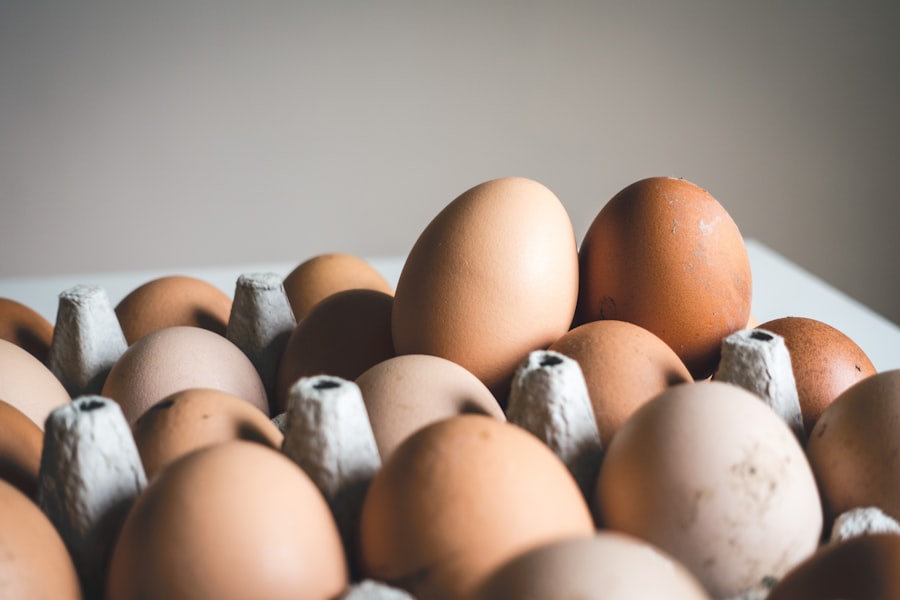Breeding Coturnix quail can be a rewarding and profitable venture for those interested in poultry farming. Coturnix quail, also known as Japanese quail, are popular for their fast growth, high egg production, and relatively low maintenance requirements. Understanding the basics of breeding Coturnix quail is essential for success in this endeavor.
Coturnix quail reach sexual maturity at around 6-8 weeks of age, making them an ideal choice for breeding purposes. The breeding season for quail typically begins in the spring and continues through the summer months. During this time, male quail will begin to crow and display mating behaviors, while female quail will lay eggs regularly. It’s important to note that quail are monogamous birds, meaning that they will typically pair off and mate with one partner for the duration of the breeding season.
In order to successfully breed Coturnix quail, it’s important to provide them with a suitable breeding environment that mimics their natural habitat. This includes providing ample space for mating and nesting, as well as ensuring that the birds have access to a balanced diet and clean water. Additionally, understanding the basics of incubation and brooding is crucial for successfully hatching and raising quail chicks. By familiarizing yourself with the natural breeding behaviors of Coturnix quail and providing them with the appropriate care and environment, you can increase the likelihood of a successful breeding season.
Table of Contents
- 1 Selecting the Right Breeding Stock
- 2 Creating the Ideal Breeding Environment
- 3 Managing the Breeding Process
- 4 Caring for the Eggs and Chicks
- 5 Addressing Common Breeding Challenges
- 6 Maximizing the Benefits of Breeding Coturnix Quail
- 7 FAQs
- 7.1 What is the breeding age for coturnix quail?
- 7.2 How many eggs do coturnix quail lay?
- 7.3 What is the incubation period for coturnix quail eggs?
- 7.4 What are the ideal breeding conditions for coturnix quail?
- 7.5 How can I encourage breeding in my coturnix quail flock?
- 7.6 What is the average lifespan of coturnix quail?
Key Takeaways
- Breeding Coturnix quail requires understanding their basic needs and behaviors, such as their social structure and mating habits.
- Select breeding stock with desirable traits such as good health, high egg production, and strong fertility to ensure successful breeding outcomes.
- Create an ideal breeding environment by providing adequate space, proper lighting, and a balanced diet to promote healthy breeding and egg production.
- Manage the breeding process by monitoring mating behavior, collecting and storing eggs properly, and ensuring a clean and comfortable nesting area.
- Care for the eggs and chicks by maintaining proper temperature and humidity levels, providing a balanced diet, and protecting them from predators and disease.
- Address common breeding challenges such as low fertility, egg production issues, and disease prevention to ensure a successful breeding operation.
- Maximize the benefits of breeding Coturnix quail by selling surplus eggs and chicks, using the meat for personal consumption, and enjoying the process of raising these unique birds.
Selecting the Right Breeding Stock
Selecting the right breeding stock is crucial for establishing a successful Coturnix quail breeding program. When choosing breeding stock, it’s important to select birds that are healthy, genetically diverse, and exhibit desirable traits such as high egg production and fast growth. By carefully selecting breeding stock, you can improve the overall quality of your quail flock and increase the likelihood of producing healthy and productive offspring.
When selecting breeding stock, it’s important to choose birds that are free from any genetic defects or health issues. Inspecting the birds for signs of disease or deformities can help prevent the spread of illness and ensure that only the healthiest birds are used for breeding purposes. Additionally, selecting birds with desirable traits such as large body size, strong egg production, and good temperament can help improve the overall quality of your quail flock.
It’s also important to consider genetic diversity when selecting breeding stock. Inbreeding can lead to a decrease in genetic diversity and an increase in genetic defects, so it’s important to introduce new bloodlines into your flock regularly. By carefully selecting breeding stock from different sources and avoiding close relatives, you can help maintain genetic diversity within your quail flock and improve overall health and productivity.
Creating the Ideal Breeding Environment
Creating the ideal breeding environment is essential for successful Coturnix quail breeding. Providing a suitable environment that mimics the natural habitat of quail can help encourage mating behaviors, egg laying, and successful incubation. By understanding the specific environmental needs of Coturnix quail and providing them with the appropriate conditions, you can increase the likelihood of a successful breeding season.
One of the most important aspects of creating the ideal breeding environment for Coturnix quail is providing ample space for mating and nesting. Quail are ground-dwelling birds that prefer to nest in secluded areas, so providing them with nesting boxes or shelters can help encourage mating behaviors and provide a safe space for egg laying. Additionally, ensuring that the birds have access to clean water, a balanced diet, and appropriate lighting can help support overall reproductive health and egg production.
Maintaining a consistent temperature and humidity level is also crucial for creating the ideal breeding environment for Coturnix quail. Quail eggs require specific conditions for successful incubation, including a temperature of around 99.5 degrees Fahrenheit and a humidity level of around 60%. By providing a stable and controlled environment for incubating quail eggs, you can increase the likelihood of a successful hatch and improve overall chick survival rates.
Managing the Breeding Process
Managing the breeding process is essential for ensuring a successful and productive Coturnix quail breeding program. This includes monitoring mating behaviors, collecting and incubating eggs, and caring for brooding hens and chicks. By understanding the specific needs of Coturnix quail during the breeding process and providing them with appropriate care and management, you can increase the likelihood of a successful hatch and improve overall chick survival rates.
One of the key aspects of managing the breeding process is monitoring mating behaviors and egg production. Male quail will typically display mating behaviors such as crowing and strutting, while female quail will lay eggs regularly once they have mated. By observing these behaviors and collecting eggs regularly, you can ensure that you have a steady supply of fertile eggs for incubation.
Once eggs have been collected, it’s important to store them properly before incubation. Quail eggs should be stored in a cool, dry place with a consistent temperature of around 55-60 degrees Fahrenheit. It’s important to handle the eggs carefully to avoid damaging the delicate shells and to rotate them regularly to prevent the yolks from sticking to the membranes inside.
During the incubation process, it’s important to monitor temperature and humidity levels closely to ensure optimal conditions for hatching. Turning the eggs several times a day can help prevent the embryos from sticking to the shells and improve overall hatch rates. Additionally, providing a clean and stable environment for brooding hens and chicks is crucial for ensuring their health and survival during the early stages of development.
Caring for the Eggs and Chicks
Caring for the eggs and chicks is crucial for ensuring their health and survival during the early stages of development. This includes providing appropriate incubation conditions, handling eggs carefully, and providing a clean and stable environment for brooding hens and chicks. By understanding the specific needs of Coturnix quail eggs and chicks and providing them with appropriate care and management, you can increase the likelihood of a successful hatch and improve overall chick survival rates.
During the incubation process, it’s important to monitor temperature and humidity levels closely to ensure optimal conditions for hatching. Turning the eggs several times a day can help prevent the embryos from sticking to the shells and improve overall hatch rates. Additionally, providing a clean and stable environment for brooding hens and chicks is crucial for ensuring their health and survival during the early stages of development.
Once chicks have hatched, it’s important to provide them with appropriate care and management to ensure their health and survival. This includes providing them with a clean and warm brooding area, access to clean water and a balanced diet, and monitoring their growth and development closely. Additionally, providing appropriate lighting and ventilation can help support overall chick health and reduce the risk of disease.
It’s also important to handle chicks carefully to avoid causing injury or stress. Handling chicks gently and avoiding sudden movements can help reduce their stress levels and improve overall health and development. By providing appropriate care and management for both eggs and chicks, you can increase the likelihood of a successful hatch and improve overall chick survival rates.
Addressing Common Breeding Challenges

Breeding Coturnix quail can present various challenges that may affect overall productivity and success. Common breeding challenges include low fertility rates, poor hatch rates, disease outbreaks, and high chick mortality rates. By understanding these common challenges and implementing appropriate management strategies, you can improve overall breeding success and productivity.
Low fertility rates can be caused by various factors such as age, genetics, stress, or inadequate nutrition. To address low fertility rates, it’s important to ensure that breeding stock is healthy, well-nourished, and free from stressors such as overcrowding or excessive handling. Providing a balanced diet with adequate protein levels can also help improve fertility rates in quail.
Poor hatch rates can be caused by factors such as improper incubation conditions, genetic defects, or poor egg handling practices. To address poor hatch rates, it’s important to monitor temperature and humidity levels closely during incubation, handle eggs carefully to avoid damage, and provide appropriate turning methods to prevent embryos from sticking to the shells.
Disease outbreaks can pose a significant threat to overall breeding success in Coturnix quail. Common diseases such as coccidiosis or respiratory infections can cause high mortality rates in both adults and chicks. To address disease outbreaks, it’s important to implement biosecurity measures such as quarantine protocols, regular cleaning and disinfection practices, and vaccination programs where applicable.
High chick mortality rates can be caused by factors such as inadequate brooding conditions, poor nutrition, or genetic defects. To address high chick mortality rates, it’s important to provide a clean and warm brooding area with access to clean water and a balanced diet. Monitoring chick growth and development closely can also help identify any potential health issues early on.
Maximizing the Benefits of Breeding Coturnix Quail
Breeding Coturnix quail can offer various benefits such as high egg production, fast growth rates, low maintenance requirements, and potential profitability. By implementing appropriate management strategies and addressing common breeding challenges, you can maximize the benefits of breeding Coturnix quail.
One of the key benefits of breeding Coturnix quail is their high egg production potential. Quail are known for their prolific egg-laying abilities, with some breeds capable of laying up to 300 eggs per year. By selecting breeding stock with strong egg production traits and implementing appropriate management practices, you can maximize egg production potential in your quail flock.
Coturnix quail are also known for their fast growth rates, making them an ideal choice for meat production purposes. By selecting breeding stock with desirable growth traits such as large body size and efficient feed conversion rates, you can maximize meat production potential in your quail flock.
Additionally, Coturnix quail are relatively low maintenance compared to other poultry species such as chickens or ducks. They require less space, feed, and time commitment, making them an attractive option for small-scale poultry farmers or backyard enthusiasts.
Breeding Coturnix quail also offers potential profitability through egg sales, meat production, or selling breeding stock to other farmers or enthusiasts. By maximizing egg production potential, meat production efficiency, and overall flock health, you can increase the likelihood of generating income from your quail breeding program.
In conclusion, understanding the basics of breeding Coturnix quail is essential for success in this endeavor. By selecting the right breeding stock, creating the ideal breeding environment, managing the breeding process, caring for eggs and chicks, addressing common breeding challenges, and maximizing benefits through appropriate management strategies, you can increase overall productivity and success in your Coturnix quail breeding program.
If you’re interested in breeding coturnix quail, you may also want to consider the best housing options for your birds. Poultry Wizard offers a helpful article on converting a shed into a chicken coop, which can provide valuable insights into creating a suitable environment for your quail. Check out their article on converting a shed to a chicken coop for practical tips and advice on creating the ideal space for your quail breeding operation.
FAQs
What is the breeding age for coturnix quail?
Coturnix quail reach sexual maturity at around 6-8 weeks of age, at which point they can start breeding.
How many eggs do coturnix quail lay?
Coturnix quail are prolific layers and can lay up to 300 eggs per year, with each bird laying an average of 12-14 eggs per month during the peak laying season.
What is the incubation period for coturnix quail eggs?
The incubation period for coturnix quail eggs is approximately 17 days.
What are the ideal breeding conditions for coturnix quail?
Coturnix quail thrive in a well-ventilated and clean environment with access to fresh water and a balanced diet. They also require a 14-16 hour light cycle to stimulate breeding behavior.
How can I encourage breeding in my coturnix quail flock?
To encourage breeding, ensure that the quail have a balanced diet, access to clean water, and a suitable nesting area. Providing a consistent light cycle and minimizing stress in the flock can also help stimulate breeding behavior.
What is the average lifespan of coturnix quail?
Coturnix quail have an average lifespan of 2-5 years, with proper care and management.
Meet Walter, the feathered-friend fanatic of Florida! Nestled in the sunshine state, Walter struts through life with his feathered companions, clucking his way to happiness. With a coop that’s fancier than a five-star hotel, he’s the Don Juan of the chicken world. When he’s not teaching his hens to do the cha-cha, you’ll find him in a heated debate with his prized rooster, Sir Clucks-a-Lot. Walter’s poultry passion is no yolk; he’s the sunny-side-up guy you never knew you needed in your flock of friends!







